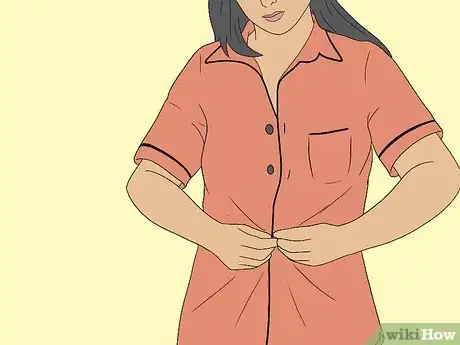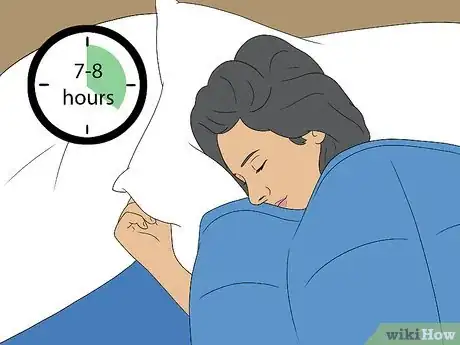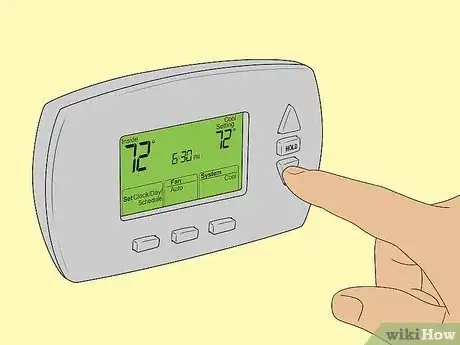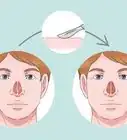This article was co-authored by Nancy Lin, PhD and by wikiHow staff writer, Sophia Latorre. Dr. Nancy Lin is a Licensed Clinical Psychologist and the Owner of Go to Sleep San Diego, a private practice providing therapy for people suffering from insomnia, trauma, depression, and related problems. She is also trained in issues related to cultural diversity in mental health. Dr. Lin holds a Bachelors degree in Psychology from The University of California, Berkeley and a Masters degree in Medical Anthropology from the University of London, SOAS. She earned her Ph.D. in Clinical Psychology from The University of Massachusetts Boston and completed an APA-accredited internship and postdoctoral training at the VA San Diego Healthcare System (VASDHS).
There are 15 references cited in this article, which can be found at the bottom of the page.
This article has been viewed 35,041 times.
Weighted blankets, or gravity blankets, apply a light, even pressure over your entire body, similar to a gentle hug. This deep pressure stimulation creates a calming effect that can lower anxiety and help you toss and turn less so you get a better night’s sleep and wake up feeling refreshed. While there’s no guarantee that a weighted blanket will work for you, research shows that many people benefit from one, so feel free to try it out!
Steps
Figuring Out If a Weighted Blanket Is Right for You
-
1Try a weighted blanket if you have an anxiety disorder or panic disorder. The weight of the blanket simulates “deep touch pressure,” which affects your nervous system by increasing your body’s production of both serotonin and oxytocin. This increases relaxation so you get a great night’s sleep.[1]
- A weighted blanket can also decrease your cortisol levels so you feel less stressed.[2]
- Some people describe a weighted blanket as a “hug machine.”
- To reduce your anxiety even further, do some meditation before bed.
-
2Use a weighted blanket if you are restless or have insomnia. The gentle pressure of a weighted blanket can limit how often you toss and turn at night, leading to more restful sleep.[3] Similarly, if you suffer from insomnia, the blanket can help you feel more settled so you get a good night’s sleep.[4]Advertisement
-
3Ask your pediatrician if a weighted blanket is right for your child. There’s some evidence that a weighted blanket can help children with attention deficit hyperactivity disorder (ADHD) or those on the Autism spectrum relax and calm down.[5] However, there’s also some concern about the safety of weighted blankets for children and there have been some deaths associated with them due to suffocation.[6] Chat with your child’s doctor to find out if a weighted blanket would be a good choice for your little one.
- You could try giving your child a weighted blanket to help them fall asleep. Check on them frequently and swap out the blanket for a regular one once they’re snoozing.[7]
- Don’t put a weighted blanket over a child that cannot remove it themselves.[8]
- Never put a weighted blanket on a baby under 1 year.[9]
-
4Avoid using a weighted blanket if you have a sleep disorder or other health problems. Unfortunately, it’s best not to use a weighted blanket if you suffer from obstructive sleep apnea or have asthma.[10]
- Similarly, don’t use a weighted blanket if you have cardiac issues, epilepsy, or circulatory problems.[11]
-
5Stick with a regular blanket if you’re claustrophobic. If you have a fear of small spaces, a weighted blanket could trigger you. Feel free to try one out, but it might not be a good option for you.[12]
Using a Weighted Blanket
-
1Get a blanket that weighs 12 pounds (5.4 kg). These blankets are available in a range of different weights, from 4 to 30 pounds (1.8 to 13.6 kg). Studies show that a blanket with a weight of 12 pounds (5.4 kg) is optimal for adults as it creates a light pressure while keeping you from getting too warm at night.[13]
- If a 12 lb (5.4 kg) blanket doesn’t work for you, choose one that weighs between 5 and 10% of your body weight.[14]
-
2Choose a blanket with materials that are comfortable for you. Weighted blankets are filled with different materials depending on the manufacturer. Some have glass beads while others have metal or plastic pellets.[15] Check out a few in-person to figure out which you find the most comfortable, as this is a matter of personal preference.
- Consider how easy the blanket is to wash, too!
-
3Wear lighter or fewer clothes if you get hot at night. Since a heavier blanket can keep you warmer, skip the flannel pajamas and choose clothes that are thin and lightweight. Or, sleep in your birthday suit![16]
-
4Make sure the blanket doesn’t hang off the edge of your bed. These blankets come in different sizes. Get a blanket that fits over your body but isn’t too large—it shouldn’t hang over your bed.[17]
Getting Great Sleep
-
1Aim for 7-8 hours of sleep per night. As an adult, you need about 8 hours of sleep per night. Teens need 9-10, younger kids need at least 10, preschoolers need up to 12, and babies need between 16 and 18 hours every night.[18]
- Not getting enough sleep can make you irritable, depressed, or anxious. It also affects your cognitive skills and reaction times, so get those z’s in!
-
2Wake up and go to bed at the same time every day. Creating a regular sleep schedule is actually pretty important and can improve the quality of your sleep. Make a schedule that works for you and stick to it—even on weekends and holidays.[19]
- For instance, you might go to bed at 10 pm and wake up at 6 am. If you’re more of a night owl with a flexible schedule, go to sleep at midnight and get up at 8.
-
3Have your last meal a few hours before bed. Eating a heavy meal too close to bedtime isn’t a great idea. You don’t want to be too hungry or too full when you lay down, so eat dinner a few hours before bed and avoid late-night snacking. Similarly, drink a little bit so you’re not thirsty, but not so much that you’ll need to get up to use the bathroom frequently.[20]
- Stay away from caffeine and nicotine in the evening, as well.[21]
-
4Make your bedroom cool, dark, and comfortable. You won’t sleep well if you’re too hot or if your room is bright. Turn down the thermostat or use a fan at night and hang up some light-blocking shades to keep the sunlight from filtering into your room.[22]
- You can even use earplugs or a white noise machine if you like.
- Try to avoid watching TV in bed or scrolling on your phone. The blue light can make it harder to fall asleep.[23]
-
5Exercise every day. Being active during the day can help you sleep longer and better. Try to get some exercise every day, but don’t do strenuous workouts before you hit the hay—exercising within 2 hours of bedtime could actually negatively impact your sleep.[24]
-
6Minimize your stress. If you’ve got a lot on your mind, it could be hard to fall asleep. Take a few minutes to write down anything you need to take care of as well as any stresses.[25] Then, set aside your list to tackle the next day.
- Do some restful activities before bed, like meditating or taking a bath.[26]
References
- ↑ https://www.sleep.org/articles/will-a-weighted-blanket-help-you-sleep-better/
- ↑ https://www.psychologytoday.com/us/blog/sleep-newzzz/201907/what-you-need-know-about-using-weighted-blanket
- ↑ https://www.sleep.org/articles/will-a-weighted-blanket-help-you-sleep-better/
- ↑ https://www.health.harvard.edu/blog/do-weighted-blankets-help-with-insomnia-202111152637
- ↑ https://www.pennmedicine.org/updates/blogs/health-and-wellness/2019/february/weighted-blankets
- ↑ https://www.oxfordhealth.nhs.uk/wp-content/uploads/2014/05/Sensory-Weighted-Product-Advice.pdf
- ↑ https://sleepcouncil.org.uk/can-a-weighted-blanket-help-you-sleep/
- ↑ https://www.oxfordhealth.nhs.uk/wp-content/uploads/2014/05/Sensory-Weighted-Product-Advice.pdf
- ↑ https://www.nationwidechildrens.org/family-resources-education/700childrens/2019/11/weighted-blankets
- ↑ https://www.sleepfoundation.org/bedding-information/weighted-blanket-benefits
- ↑ https://www.oxfordhealth.nhs.uk/wp-content/uploads/2014/05/Sensory-Weighted-Product-Advice.pdf
- ↑ https://www.psychologytoday.com/us/blog/lets-talk-about-mental-health/202012/should-you-get-weighted-blanket
- ↑ https://www.psychologytoday.com/us/blog/sleep-newzzz/201907/what-you-need-know-about-using-weighted-blanket
- ↑ https://sleepcouncil.org.uk/can-a-weighted-blanket-help-you-sleep/
- ↑ https://sleepcouncil.org.uk/can-a-weighted-blanket-help-you-sleep/
- ↑ https://www.psychologytoday.com/us/blog/sleep-newzzz/201907/what-you-need-know-about-using-weighted-blanket
- ↑ https://sleepcouncil.org.uk/can-a-weighted-blanket-help-you-sleep/
- ↑ https://medlineplus.gov/healthysleep.html
- ↑ https://www.cdc.gov/sleep/about_sleep/sleep_hygiene.html
- ↑ https://www.cdc.gov/sleep/about_sleep/sleep_hygiene.html
- ↑ https://medlineplus.gov/healthysleep.html
- ↑ https://health.clevelandclinic.org/what-is-the-ideal-sleeping-temperature-for-my-bedroom/
- ↑ https://medlineplus.gov/healthysleep.html
- ↑ https://www.sleepfoundation.org/physical-activity/exercise-and-sleep
- ↑ https://www.urmc.rochester.edu/encyclopedia/content.aspx?ContentID=4552&ContentTypeID=1
- ↑ https://www.sleepfoundation.org/sleep-hygiene/bedtime-routine-for-adults
- ↑ https://www.oxfordhealth.nhs.uk/wp-content/uploads/2014/05/Sensory-Weighted-Product-Advice.pdf











































































Medical Disclaimer
The content of this article is not intended to be a substitute for professional medical advice, examination, diagnosis, or treatment. You should always contact your doctor or other qualified healthcare professional before starting, changing, or stopping any kind of health treatment.
Read More...